Who Is Ante Rebić?
While the name of Zlatan Ibrahimović resonates in every conversation about AC Milan, it is Ante Rebić the player that has arguably offered the most significant contribution to the Rossoneri during the 2019/20 Serie A season.
On loan from Bundesliga side Eintracht Frankfurt, the 26-year-old Croatian winger has recorded statistics that suggest that he has matured significantly as a footballer this past campaign under the management of Stefano Pioli.
In particular, Rebić has been able to step up his finishing: he tallied 11 goals in 26 appearances, recording an enviable scoring frequency of one goal every 128 minutes and largely defying his 6.26 expected goals.
This tactical analysis breaks down the tactics of Rebić’s game, including his ability to finish chances with both feet, his intelligent use of speed to attack the space, his versatility on the pitch and his admirable pressing efforts when Milan are out of possession.
This analysis also points out the one area in which Rebić has room for improvement – precisely, his decision-making on the ball.
Ante Rebić Style Of Play
Despite being predominantly right-footed, Rebić relies on both feet to take shots and finish off his chances.
His shot map (below) shows that there is a certain degree of balance between the number of shots he took with his strong and weak foot last season.
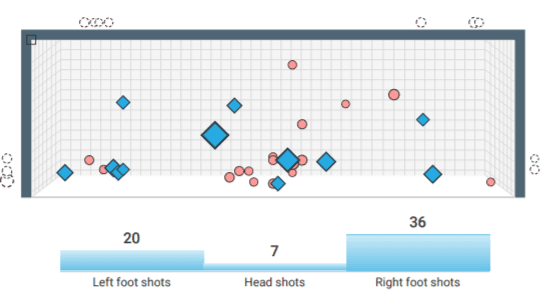
Out of these shots, he has scored three goals with his left foot and eight with his right.
It is, however, true that he has not shown to be particularly apt to time his headers on crosses, as none of his 11 goals this season have been headers.
What is impressive about Rebić’s clinical finishing is that his goals do not result from a high-shooting tendency.
Rebić takes 2.46 shots per 90 minutes, which makes him a quite unselfish offensive player if one compares him to the shots taken by the leader in this category, Cristiano Ronaldo, who has 5.79 attempts per 90 minutes.
In fact, Rebić ranks only 59th in Serie A for total shots, while registering one of the best goal-per-90 averages, with 0.66 goals per 90 minutes.
Ante Rebić Speed & Agility
Ante Rebić is able to reach one of the highest speeds among European footballers.
At the 2018 World Cup, he registered the fastest speed of the tournament with 34 km/h (21.1 mph) alongside Ronaldo.
While playing for Eintracht Frankfurt in the 2018/19 Bundesliga season, he touched 35.1 km/h (21.8 mph), becoming the second-fastest player in the league’s history.
In Pioli’s Milan, this speed allows Rebić to be a winger who continuously asks questions of the opponent’s defensive line.
To his acceleration, Rebić combines a remarkable ability to recognize the vacant space to exploit with his runs.
This is not only true for areas on the left flank, where he regularly features, but also for a more extensive section of the final third.
Rebić’s willingness to drift inside the final third with his runs is indeed visible in his heat map from the 2019/20 season.
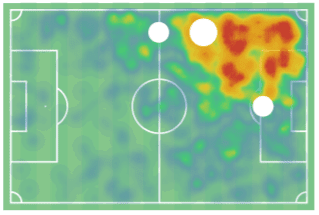
Rebić is aware of his fast pace and does not hesitate to ask his teammates to deliver balls in these dangerous spaces.
He knows that thanks to his acceleration, he is often able to separate himself from the defenders when engaging them on a foot race.
The picture below, taken from Milan’s away game at Napoli, shows Rebić making a run from the left side toward the centre of the box.
With that run, he carves out a few metres of space that he uses to receive the ball, turn, and pick out teammate Theo Hernandez with a precise assist for Milan’s 1-0 goal.
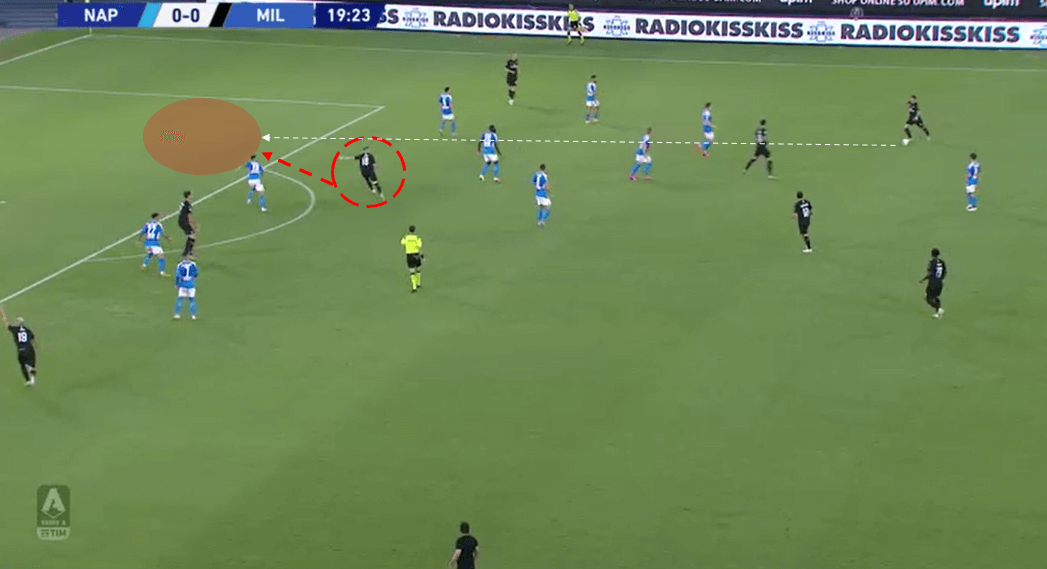
Even when he does not receive the ball, these unselfish runs prove crucial in that they shift the opponent’s defensive line and open up space for his teammates.
In the sequence shown below, taken from the Milan derby, Rebić’s run moves Inter’s centre-back Stefan de Vrij out of position.
Although not shown in the picture, this causes Zlatan Ibrahimović to be isolated in the box for a one-versus-one aerial duel, which the Swedish forward wins upon receiving a long pass by teammate Samu Castillejo.
The play results in Ibrahimović using his head to redirect Castillejo’s cross toward Rebić, who will then give Milan a 1-0 lead.
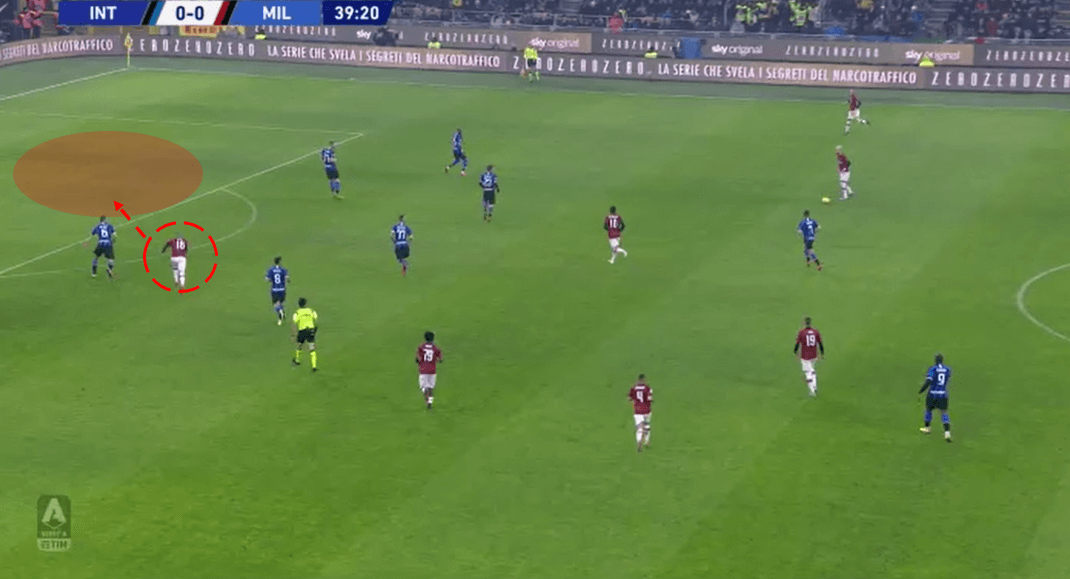
Ante Rebić Position Versatility
Standing at 185 centimetres (6 feet, 1 inch) and weighing 78 kilos (172 pounds), Rebić possesses strong physical attributes alongside his unique speed.
He can indeed rely on strong balance, explosiveness while on the dribble, and remarkable stamina.
This is why Pioli has the option of employing Rebić in any attacking position in Milan’s 4-2-3-1.
The pictures below show Rebić can be used on the left-wing (his natural position) but also as a centre-forward.
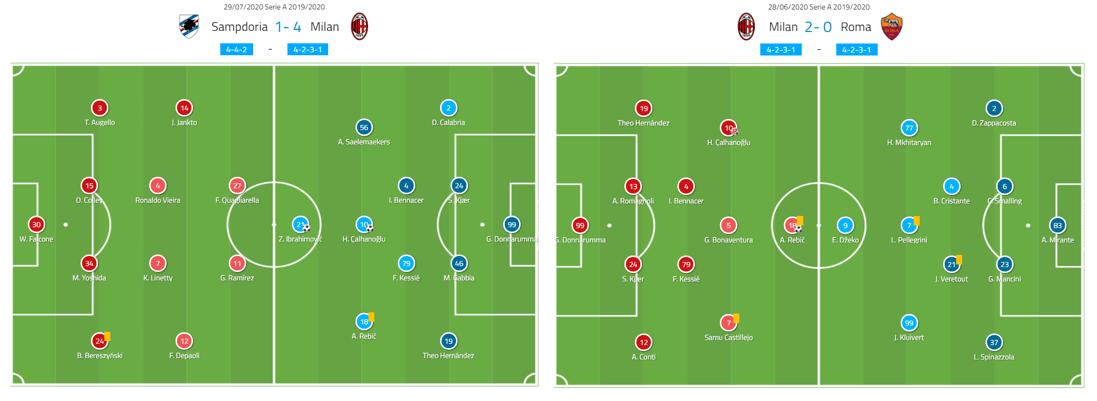
On multiple occasions this past season, Rebić has successfully featured in the centre-forward position for Milan.
Rebić occupying the position as a lone striker is not a solution that Pioli adapts only when Zlatan Ibrahimović is not on the pitch.
Instead, it is a pattern that presents itself organically even when Rebić and Ibrahimović feature together in Milan’s line-up.
Since Ibrahimović tends to roam around the final third and act as an offensive playmaker for the Rossoneri, Rebić is often seen taking up that central position in the rotations.
This way, Milan can always count on having a strong presence in the central area to use as a target for their crossing, to combine with for post-up plays, or simply to keep the opponent’s centre-backs occupied.
The pictures below show instances of this movement happening on the pitch.
In the left image, as Ibrahimović drops and acts as a trequartista, Rebić takes up centre-forward duties on top.
In the right picture, we can see Rebić controlling a long ball from right-back Andrea Conti by shielding it from the defender and putting it down with his chest: Rebić’s strong physical structure makes him a reliable target for long passes.

Ante Rebić Commitment to pressing
Rebić’s work rate off the ball is exemplary, especially when it comes to applying pressure on the opponent.
Rebić is so eager to win the ball back that, at times, he is seen engaging in solo pressing efforts.
The intensity of his runs often forces the opponent to make rushed decisions on the ball.
Rebić’s speed and determination to disrupt the opponent’s action played a key role in helping Milan rank sixth in Serie A for passes per defensive action (8.99), a metric that indicates the number of passes that a team concedes to the opponent before being able to break up possession.
In the images below, taken from Milan’s home game against Atalanta, Rebić decides to apply high pressure on Atalanta wing-back Hans Hateboer despite being outnumbered three to one.
His pace and intelligent curved run cuts off the lane for Hateboer’s back pass: as a result, Rebić turns a one-versus-three situation into a one-versus-one pressing moment, with him now having to worry only about winning the ball back from Hateboer.

Ante Rebić Cleanliness on the ball
Over the years, Rebić has been accused of not always being able to take care of the ball diligently.
Last season at Milan, Rebić has shown to have matured significantly in this aspect of the game if one considers the low amount of times he has turned the ball over.
Rebić’s dispossessions add up to a low 1.3 per 90 minutes, which rank him in a very good position among the Serie A midfielders, wingers, and forwards with at least ten appearances last season.
To give an idea of how modest this 1.3 figure is, just think that there are more than 100 midfielders and offensive players who have gotten dispossessed more than Rebić in the 2019/20 Serie A campaign.
However, it’s his decision-making on the ball that has betrayed him quite often last season.
With 3.5 unsuccessful touches per 90 minutes, Rebić ranks 22nd in the list of offensive players with the most unsuccessful touches.
On the one hand, it is not a terrible statistic if one considers that Rebić is prone to taking risks in the final third with dribbles and creative plays.
On the other hand, it is important to note that it is one area in which the Croatian winger has room for improvement.
Conclusion
By developing the ability to be more clinical in the finish, Rebić has become a complete winger that can score, dribble, and press effectively.
It is no coincidence that he was a difference-maker in helping Milan secure a Europa League spot after a disastrous start to the 2019/20 Serie A campaign.
Last season has also helped him consolidate his already strong position in the line-up of manager Zlatko Dalić for the Croatia national team.
Rebić is set to stay another year with the Rossoneri, who in these days are trying to sign him from Eintracht Frankfurt on a permanent deal.
Rebić will enter his 2020/21 Serie A season knowing that he is now a key player for Pioli and that there are many expectations around his name.
The question is whether he will be able to replicate the very convincing performances from last season.
We will know more by the beginning of September 19, 2020, when the new Serie A season kicks off.

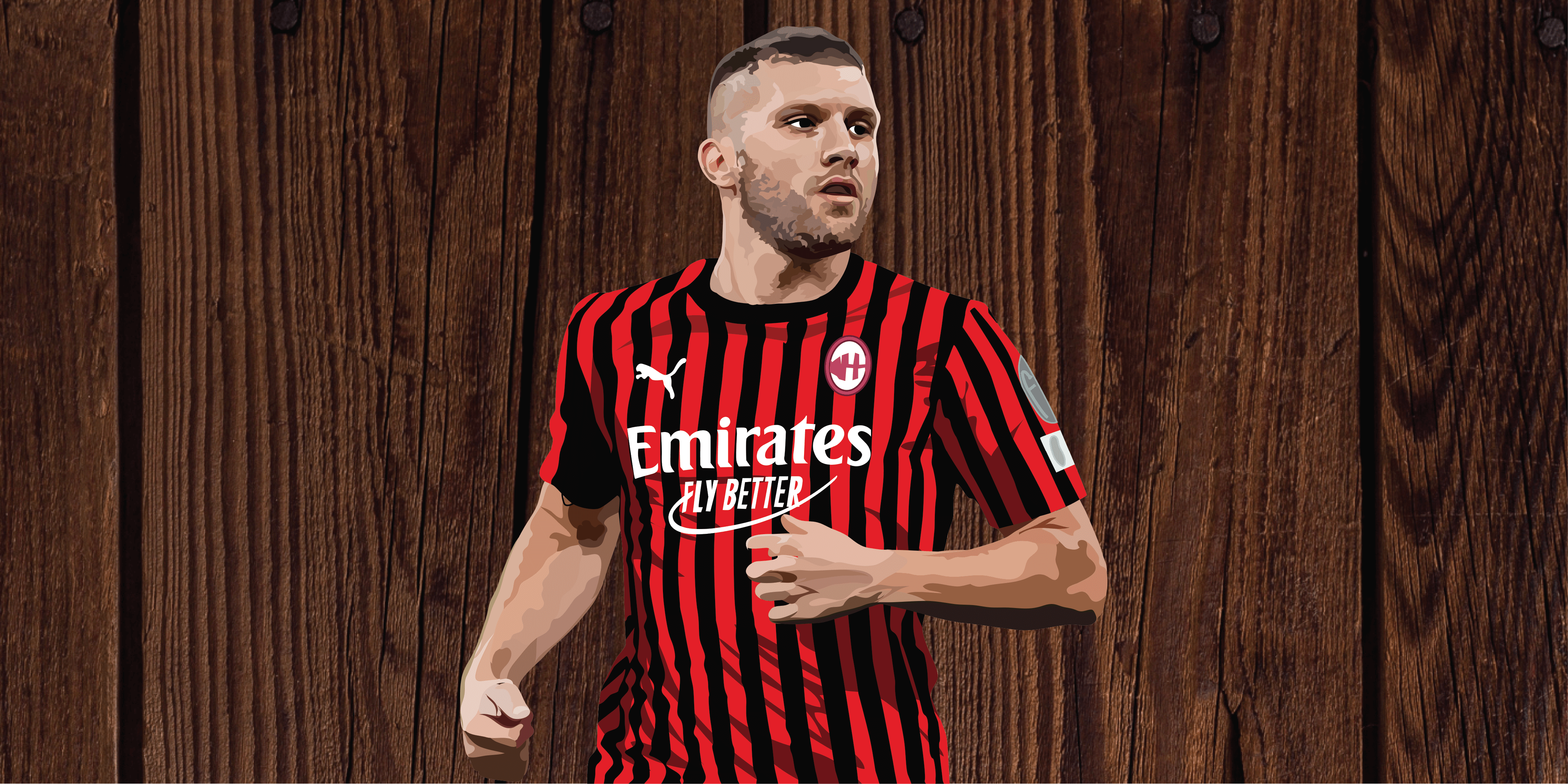



Comments